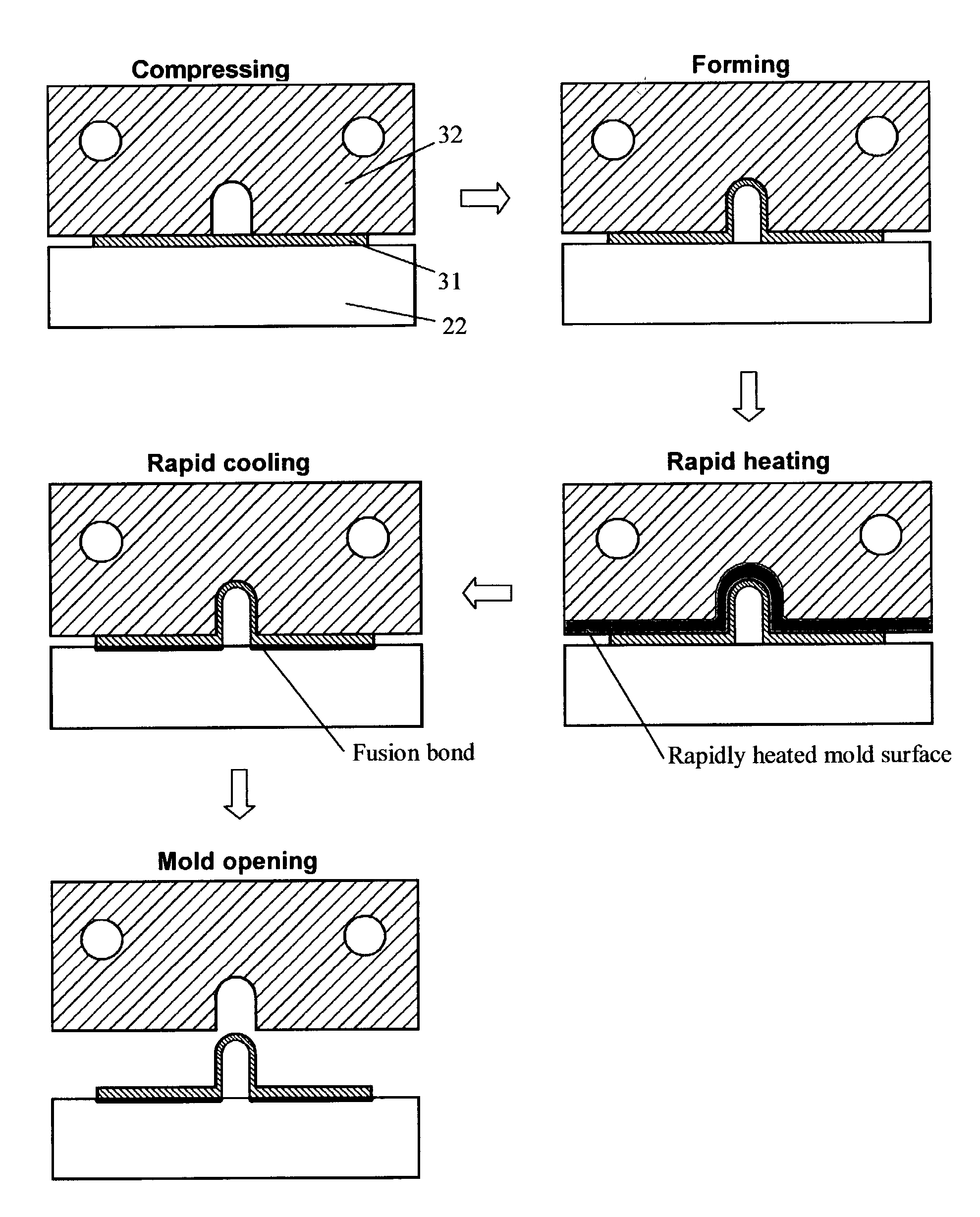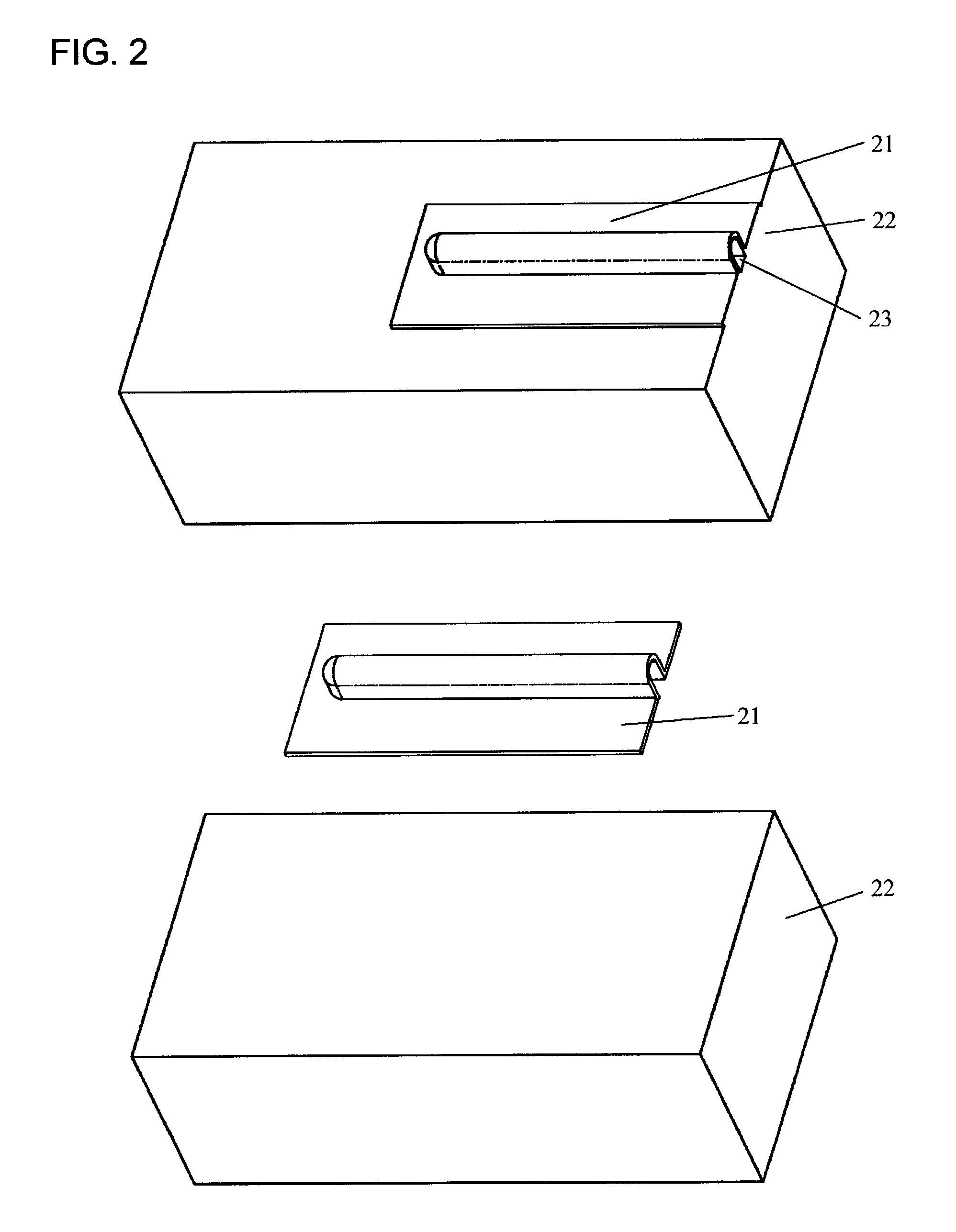Microchannel fabrication
a microchannel and fabrication technology, applied in the direction of hollow wall objects, hollow wall components, instruments, etc., can solve the problems of molten polymer at the entrance of the microstructure, the problem of affecting the quality of the microstructure, and the relatively slow rate of production,
- Summary
- Abstract
- Description
- Claims
- Application Information
AI Technical Summary
Problems solved by technology
Method used
Image
Examples
Embodiment Construction
[0030] FIG. 2 shows the design of a straight closed microchannel. The straight closed microchannel 23 is formed between a plastic film 21 and a relatively thick substrate 22. The preferable material for 22 is thermoplastic.
[0031] FIG. 3 shows the design of a U-shape closed microchannel. The U-shape closed microchannel 27 is formed between a plastic film 26 and substrate 22.
[0032] In the same way, more complicated closed microchannels can be designed. The thin thermoplastic film has thickness from a micron to a fraction of a millimeter. It has microchannels on the substrate side, thus forming closed microchannels between the film and the substrate. The layout of microchannels is designed according to actual microfluidic applications. The surface of the substrate is not necessarily flat and general contours can be used by mating the film with the substrate. The shape of the cross section of microchannels can be trapezoidal, rectangular, semicircular, or any other shapes. Microchannels...
PUM
| Property | Measurement | Unit |
|---|---|---|
| Length | aaaaa | aaaaa |
| Temperature | aaaaa | aaaaa |
| Time | aaaaa | aaaaa |
Abstract
Description
Claims
Application Information
 Login to View More
Login to View More - R&D
- Intellectual Property
- Life Sciences
- Materials
- Tech Scout
- Unparalleled Data Quality
- Higher Quality Content
- 60% Fewer Hallucinations
Browse by: Latest US Patents, China's latest patents, Technical Efficacy Thesaurus, Application Domain, Technology Topic, Popular Technical Reports.
© 2025 PatSnap. All rights reserved.Legal|Privacy policy|Modern Slavery Act Transparency Statement|Sitemap|About US| Contact US: help@patsnap.com



